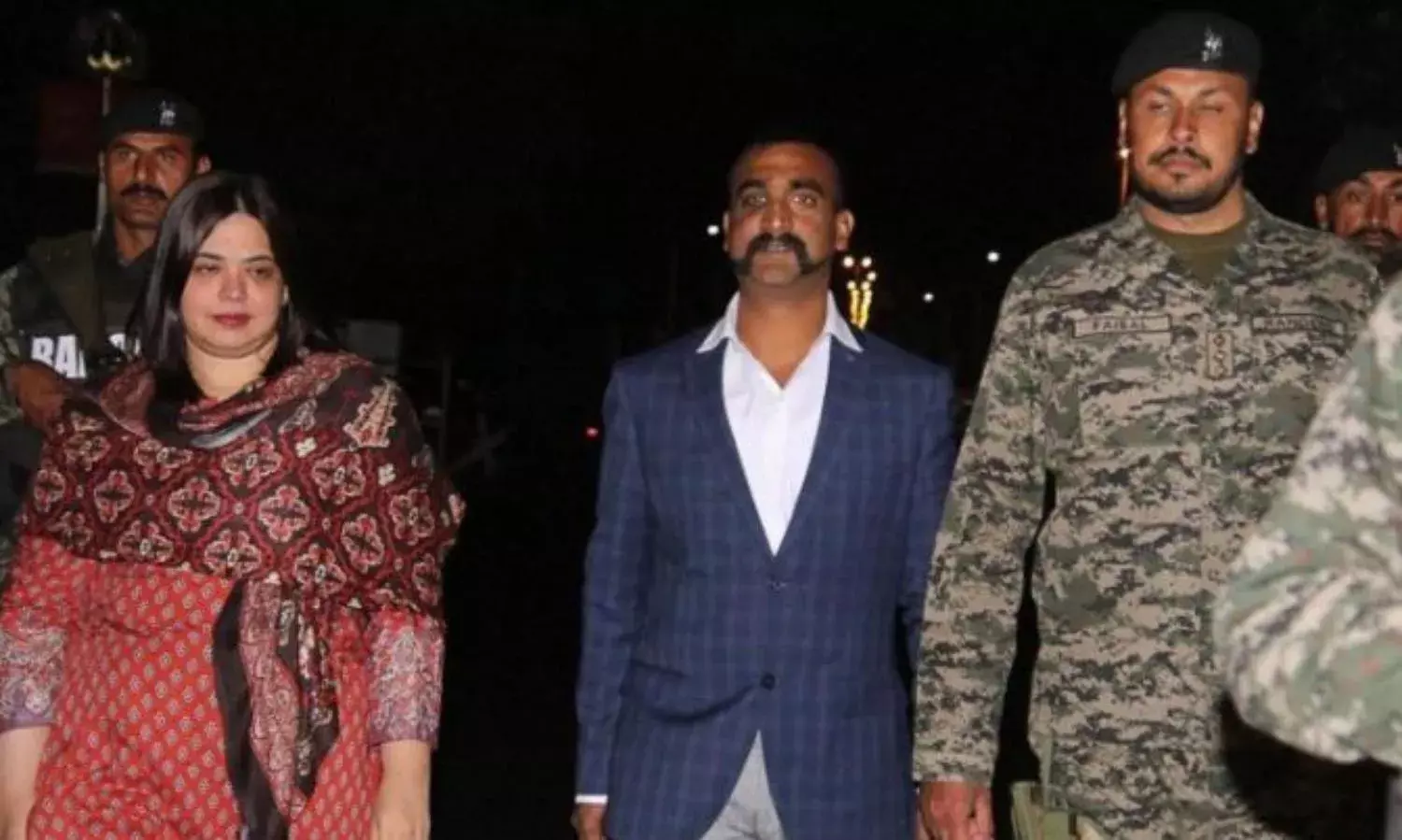Varthaman in the Aerial Dog Fight Proves The Importance of the ‘Man Behind the Gun’
“It’s not the size of the dog in the fight, it’s the size of the fight in the dog”

On February 27, 2019, twenty-four Pakistan Air Force (PAF) F-16 fighters crossed the border to attack military targets in India. The PAF’s USA-supplied Lockheed Martin F-16 Falcon is feted as the world’s most successful combat-proven multi-role fighter jet aircraft, while India’s MiG-21 Bison is to the combat aircraft industry across the globe, what Maruti Suzuki is to the Indian automobile industry.
The Indian Air Force (IAF) detected the intrusion and eight MiG-21 aircraft scrambled to engage the numerically and technologically superior F-16s. A dog fight (air-to-air combat) high up in the air ensued, and IAF’s Wg Cdr Abhinandan Varthaman piloting a MiG-21, shot down a PAF F-16 aircraft. But immediately afterwards, he was targeted by another F-16 and on his aircraft being hit, Wg Cdr Varthaman ejected and parachuted down, unfortunately landing in Pakistan-held territory. He was taken into captivity by the Pakistan Army, remaining unbowed and dignified during interrogation. He has since been repatriated to India.
The out-numbered IAF Wg Cdr Varthaman’s courageous action in taking on a superior aircraft in air combat maneuvering, once again emphasizes the adage that the “man behind the gun” matters as much and even more than the “gun” itself. Once again? Yes, independent India’s Armed Forces have displayed the most conspicuous courage, elan and skill right from 1948 onwards, both at the individual level and at the forces level.
In November 1948, with the winter already set in, the Indian Army forces reached Zojila (meaning “Blizzard Pass”) at 11,500-ft altitude, on roads built by the Madras Sappers from ancient mule tracks in one month under direct enemy fire of Pakistani forces on the heights. The Indian forces commanded by Maj Gen (later General) K.S.Thimayya, were spearheaded by Stuart tanks of 7 Cavalry Regiment and infantry on foot on their flanks. In a fine act of military deception, the Stuarts had secretly been brought from Srinagar over bridges known to be meant only for small vehicles.
The armour-infantry assault by Indian forces at that altitude was the 20th Century equivalent of Carthaginian warrior Hannibal’s surprise attack on the Roman Republic in 218 BCE, with army elephants crossing the Alps into Italy. In a blizzard and biting November cold, the Indian tanks achieved military surprise, the Pakistani forces were routed, and Zojila was captured. This operation brought Dras, Kargil and Leh under newly Independent India. It was the first time ever that armoured tanks have operated at such altitudes, making military history.
In 1965, in India’s short, sharp war against Pakistan’s misadventure, Pakistan had US-supplied Patton tanks and US-supplied transonic F-86 Sabre jet aircraft, while India had vintage Centurion tanks in ground battles and subsonic Folland Gnat aircraft in air battles. Thus, India’s strike force equipment on the ground and in the air was inferior to Pakistan’s.
The Indian military displayed its superior fighting abilities when tank battles and dog fights in the air against technologically and often numerically superior Pakistani forces were won decisively, making military history. This was possible because of the unrivalled bravery combined with the motivation, fighting spirit, battle skills and sacrifice of the Indian soldier on the ground and in the air. Even today, captured Pakistani Patton tanks are displayed in military stations all over India, commemorating the superiority of the Indian fighting man.
During the 1971 war against Pakistan, the Indian Navy made naval history with three Russian origin Petya class frigates towing three Russian origin Osa-1 missile boats of limited range, to within range of Pakistan’s Karachi harbour. In the audacious operation, the Osa-1 missile boats closed in to launch their Styx missiles, sinking three Pakistan Navy war ships and destroying Karachi’s oil storage facility, thus effectively blockading Pakistan’s only sea port. This again was military deception and surprise achieved by doing what the enemy least expected.
There are numerous acts of the most conspicuous bravery against insurmountable odds and adverse circumstances in the military history of independent India right up to the present, resulting in award of Param Vir Chakra, Mahavir Chakra and Vir Chakra to personnel of India’s army, navy and air force, which are too numerous to relate here. All show the excellence of India’s soldiers, sailors and airmen, who protect and preserve India’s sovereignty and integrity.
Reverting to our most recent hero Wg Cdr Abhinandan Varthaman, his bravery and courage against a more powerful enemy brings to mind Mark Twain writing about bravery in war, who famously said that “It’s not the size of the dog in the fight, it’s the size of the fight in the dog” that matters.
S.G.Vombatkere was commissioned as an officer into the Madras Sappers in 1962. In 1993, President of India awarded him the Vishisht Seva Medal (VSM) for distinguished services rendered during military service in the cold, high altitude region of Ladakh. He retired from active service in 1996 in the rank of Major General.



